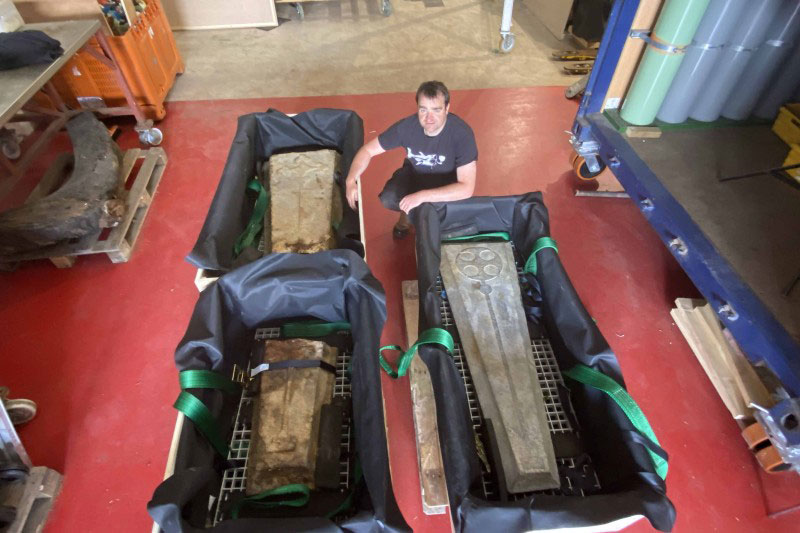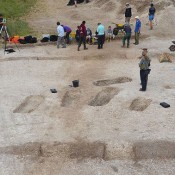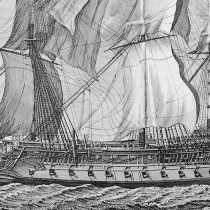Maritime archaeologists from Bournemouth University have recovered two medieval graves slabs which have been lying at the bottom of Studland Bay for nearly 800 years.
The slabs, carved from Purbeck marble, were amongst the cargo of England’s oldest historic shipwreck, which sank off the Dorset coast during the reign of Henry III in the 13th century.
The site has been named the “Mortar Wreck” because other items in its cargo included a large number of grinding mortars, also made from Purbeck stone. Details of the discovery will shortly be published in the journal Antiquity.
Divers and archaeologists led by BU brought the slabs to the surface on 4 June in a two hour operation from a depth of around seven metres where the stones lay.
One immaculately preserved slab measures one and a half metres and weighs an estimated 70 kilogrammes. The other, much larger slab is in two pieces, with a combined length of two metres and a weight of around 200 kilogrammes.
Both have carvings of Christian crosses which were popular in the thirteenth century and the research team believe they were intended to be coffin lids or crypt monuments for high status individuals in the clergy.
“The wreck went down in the height of the Purbeck stone industry and the grave slabs we have here were a very popular monument for bishops and archbishops across all the cathedrals and monasteries in England at the time,” explained Tom Cousins, a Maritime Archaeologist at Bournemouth University who led the recovery. “Examples have been found in Westminster Abbey, Canterbury Cathedral and Salisbury Cathedral, he added.”
The slabs will now be desalinated and conserved by the Bournemouth team until they can be put on public display along with the other recovered artefacts in the new Shipwreck Gallery when Poole Museum reopens next year.
The site of the Mortar Wreck was first discovered as an ‘obstruction’ in 1982 but was assumed to be a pile of rubble on the seabed. Its significance was not realised until 2019 when Tom and a team from the University dived the site on the suggestion of local charter skipper Trevor Small and uncovered the secrets lying under the sand.
The continued recovery of the artefacts, such as the mortars and grave slabs, will allow the Bournemouth team to learn more about thirteenth century life and the ancient craft of stonemasonry.
“Although Purbeck marble was quarried near Corfe Castle there has always been a debate about how much work was done here and how much was done in London. Now we know they were definitely carving them here, but they hadn’t been polished into the usual shiny finish at the time they sank so there is still more we can learn,” Tom said.
The team will continue to explore and protect the wreck over the coming years which they hope will include an operation to record the timber frames of the ships hull which are still well preserved in the sand. Tom is also planning to use this as a training opportunity for his students at the university.
“The future aim of the project is to train the next generation so that they get the same opportunities I had. We’ve already started teaching our second-year students to dive and as they get into the third year we’re going to take them out to sea and teach them their first steps to becoming maritime archaeologists,” he said.





